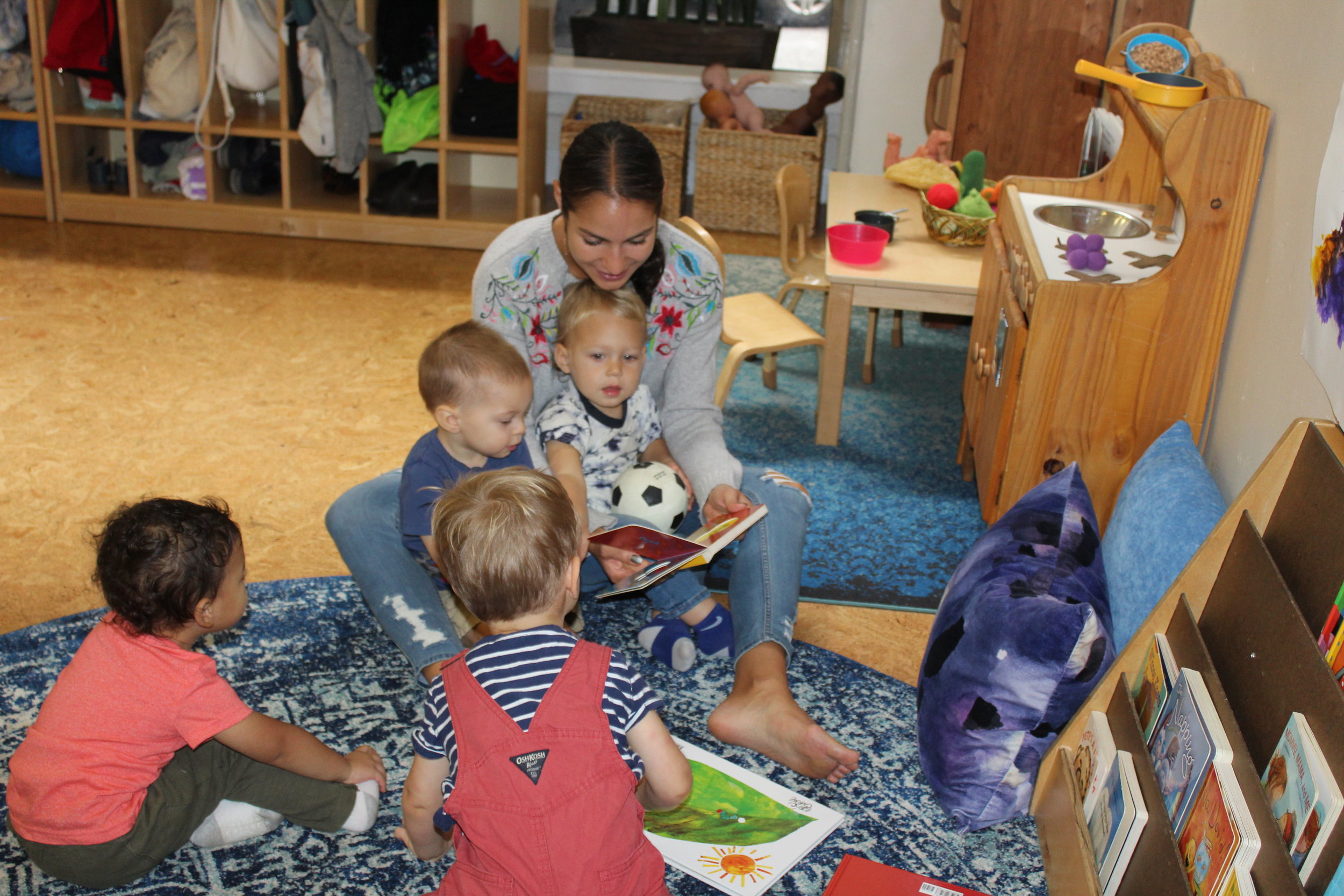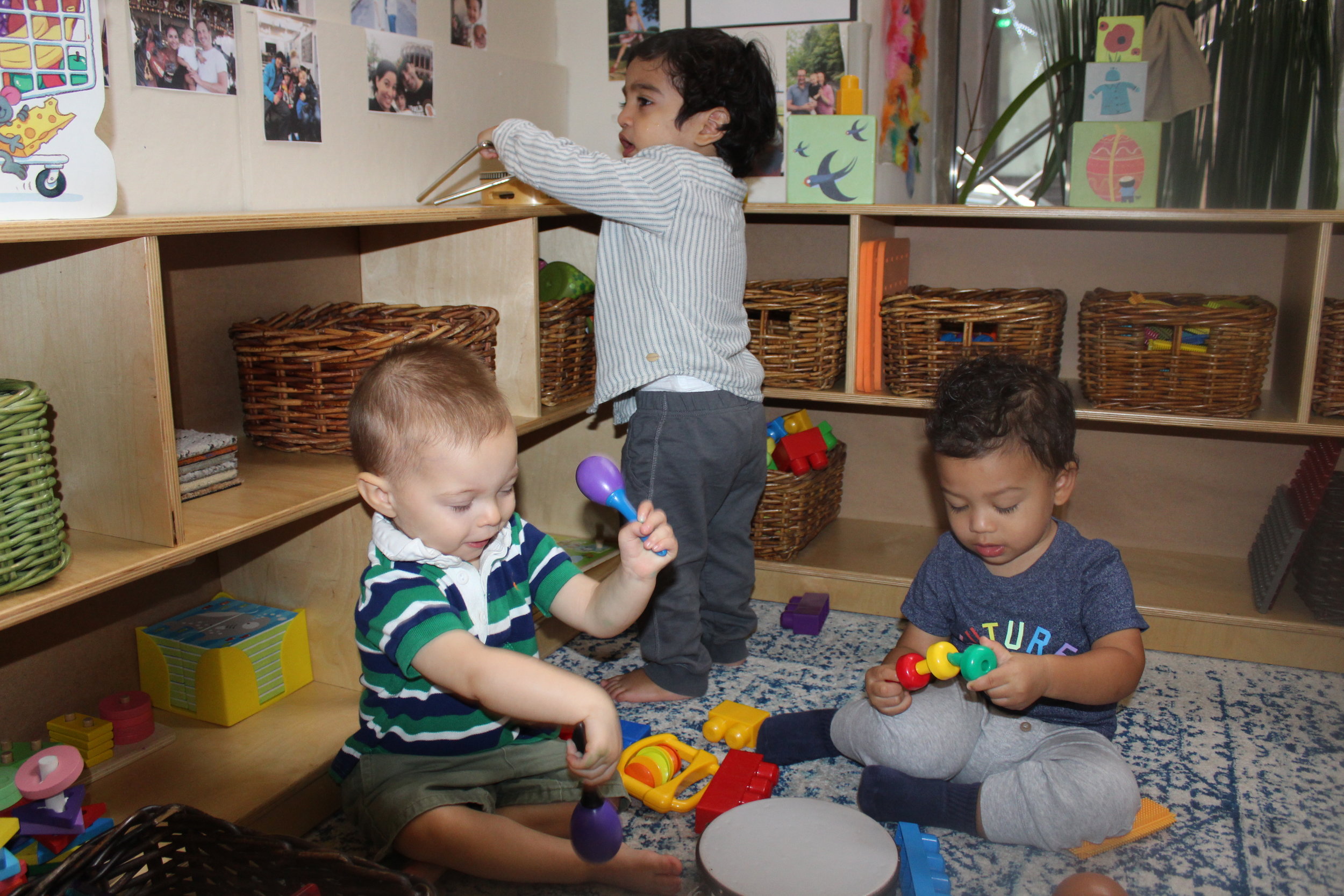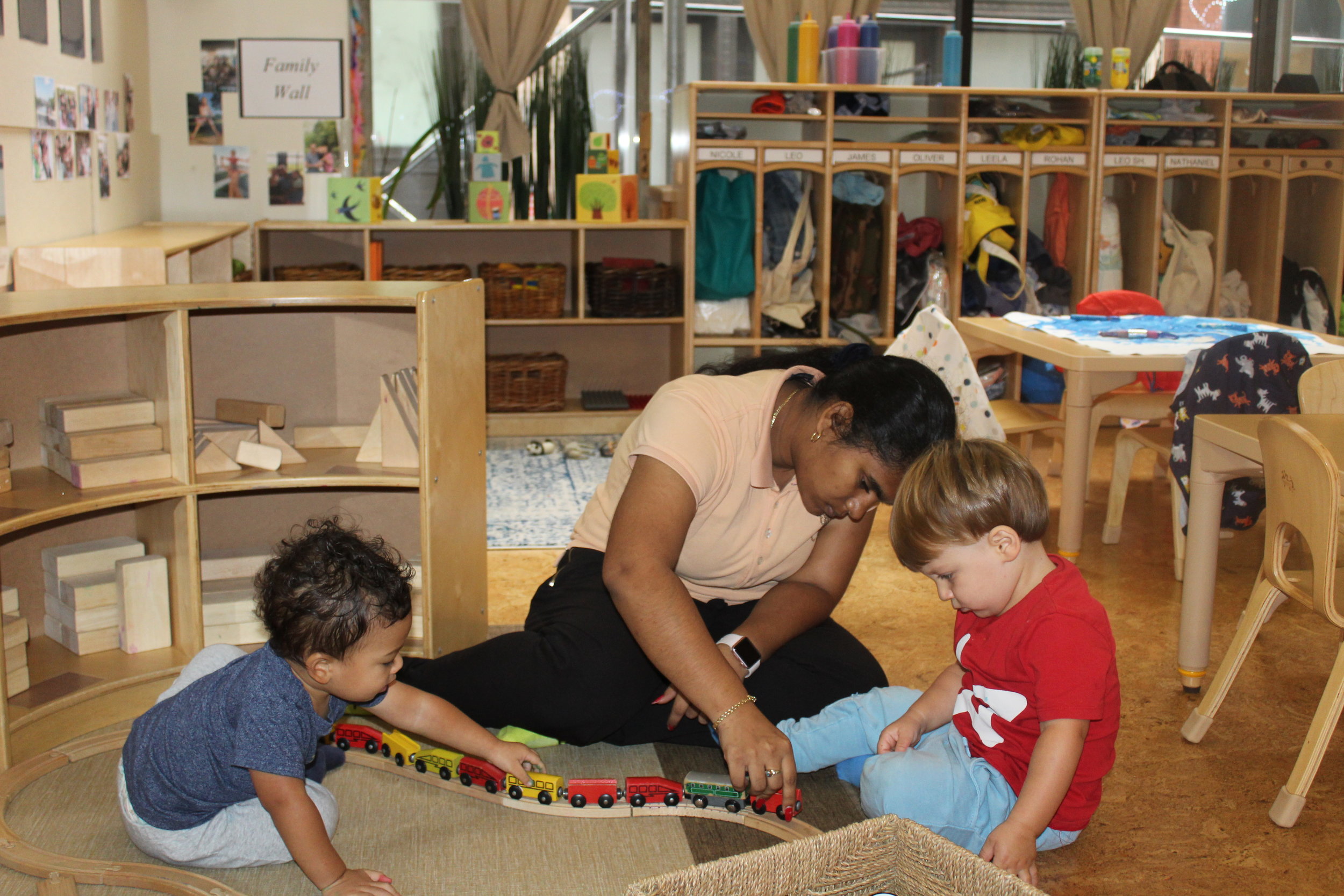The second week of school is as important as the first. Children are continuing adjusting to routines, schedules, teachers and peers. Their transition period gradually gets better. Each child has a different transition period; therefore, it is essential for teachers to go according to their pace. As each child observes and interacts with different hands-on activities, they engage with a variety of materials.
We have been reading a variety of books. They enjoy listening to Brown Bear, Brown Bear What do you see?, Pete the Cat, I love my White Shoes, Pete the Cat, I’m Rocking in My School Shoes, and Maisy Goes to Preschool.
We sang a variety of songs, including their favorite, The Wheels on the Bus, Go round and round and ABC. Music helps children’s mind and body work together. Exposing children to music, helps them learn the sounds and meanings of words. Dancing to music helps children build motor skills while allowing them to practice self-expression.
The children interacted and engaged with:
Manipulative Toys
Painting
Sensory Exploration- Clay, Model Magic, Water exploration, Sensory Scarfs and Play dough
Highlights of the week:

Exploring Clay with our Hands!
The children appeared curious and interested as the teacher placed small quantities of clay on the table. Each child approached the clay with a different disposition. They manipulate the clay in a way that distinguishes them from one another. Some touched it and explored it with their hands, or used tools to flatten the clay. They sat with a small quantity and investigated its texture. An encouraging self-initiated play is essential when young toddlers are observing, exploring, and discovering new materials. Clay is an outstanding sensory development activity. Young children are still working on fine motor skills and dexterity. Rolling, squeezing and forming the clay help them in this area. Engaging with clay is promoting their young minds to think and create.
Teacher: “Leo, I like the way you are placing the Popsicle sticks on the clay. What are you making?”
Leo: “They candlesticks.”
Teacher: “Candlesticks, for what?”
Leo: “Chocolate cake!”
Teacher: “Are you making a birthday cake?”
Leo: “Yes!”
Teacher: “I like chocolate cake!”
Revisiting Clay:
Children who did not have the opportunity to explore or would like to revisit clay exploration, we will continue investigating clay this week.


We observed James digging with a Popsicle Stick, using a front to back motion to create an open space to put the other Popsicle Sticks.
As children manipulate materials, they formulate ideas that enable them to be creative as they are exploring.



Mirror paper provides a slippery shiny smooth and reflective surface that can serve as a mirror. The colorful hues create a glossy look on the mirror paper and will not wrinkle easily like other art papers. The children simultaneously observed their reflection as they paint and press the paintbrush down, creating dabs of paint. Rohan also used his his hands and fingers to spread the paint across the mirror paper.




Clean Paint: Collaborative Painting
The children looked curious as they felt the plastic and didn't see paint on their hands. They continued touching, patting, squeezing the plastic, spreading the paint with their fingers and hands, creating a colorful work of art. They used cars and trains as well.

By patting, the children spread the paint in different directions. They saw how some colors ected


Ziploc painting is a color, sensory, imagination, and fine motor skills all in one fun activity. Fine motor skills are those that require the ability to use and coordinate small muscle groups. Giving children opportunities to play with different types of textures and objects helps them to build new ways of talking about the world and building language. This type of sensory play is also calming for children. This activity will be available again to explore this week.


The children explore using tin foil, blue paint, Q-tips as a painting tool, and a sponge-like brush. In process art there is no step-by-step instruction, there is no right or wrong way to explore and create. The art is focused on the experience, and on the exploration. For some children, the experience is relaxing or calming.



The children engaged at the water table and manipulated, and explored with cups and sponges. Cups are an excellent tool to use as an introduction to what "full" and "empty" and "light" and "heavy" means. They looked curious as they felt the sponge. They observed as the teacher squeezed the sponge and released some water from the sponge. Leo mirrored the action and discovered that he too was able to squeeze the sponge. He dipped and squeezed the sponge to experiment releasing the water. Water provides a sensory and learning experience.

We welcome interns into our classroom. As they interact and engage with the children, they are acquiring experience, and understanding of each child’s learning pace and temperament. Rosa is slowly gaining Oliver’s confidence, as she demonstrates and articulates the letters of the alphabet and places them on the contact paper. Oliver and Leo appeared interested as Rosa reads a story to them.





Today we went on a neighborhood stroll. The children saw and heard cars and trucks. Traffic lights, trees, people, and dogs are some examples of what they saw. Toddlers learn from watching the world, especially if we talk with them about it, "You saw the red fire truck?" “Look at all the different flowers and colors. What colors do you see? Is the stem of the flower soft or hard?








The children painted in pairs with Q-tips on a square canvas. Some of the benefits of children working in pairs are:
-Give learners more speaking time
-Allows them to incorporate their techniques and ideas as they begin to use their words
-Gives them a sense of achievement when reaching a team goal
-Allows us as teachers to monitor, move around the class and listen to the language they are producing and observe as they work together. The children demonstrated their different techniques when maneuvering the Q-tip, shared and respected their space.
Leo and James

Shaving cream is great for sensory exploration and provides endless opportunities for children to play and discover. Sensory play promotes many experiences:
-Sensory play encourages children to manipulate and mold materials, building up their fine motor skills and coordination.
-Sensory play uses all 5 senses, but the sense of touch is often the most frequent. Toddlers process information through their senses; therefore, they learn as they explore.
-Develop social skills (taking turns, sharing, and respecting each others space.
-Language development (experimenting with language and descriptive words).
It is essential always to provide various tools to explore. Providing choices allows children to explore their options and feel at ease with the activity.





Today we interacted and engaed with:

Music and movement contribute to children’s overall development. Listening to and making music helps children's developing brain. It creates a current that enables them to transcend their minds to a happy place. Each experience should be fun and meaningful for them.

Demonstrating different colors using sensory scarfs. The teacher articulated the colors in English and Spanish.




The children continued painting on poster board using the color we have been exploring, blue. We added some white paint to create a different shade of blue, and glue. They looked interested as they mixed the paint and glue, creating a shiny and thick texture.








Working in Pairs: Painting with Q-tips on a square canvas.
Rohan and Nicole

Leela and Oliver

Nathaniel and Leo



